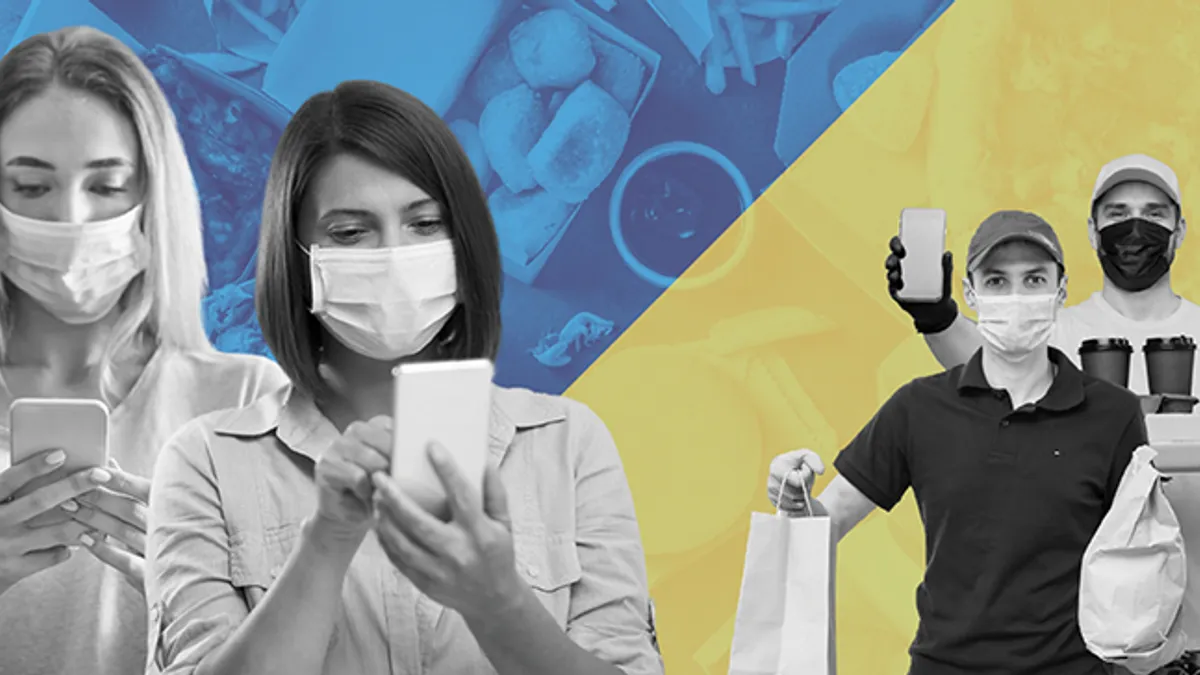The restaurant industry is in significant upheaval, exasperated by the impact of the COVID pandemic, with its most valuable consumers utilizing delivery applications to order food and explore competitive restaurant offerings. Restaurants are fighting back with their own ordering apps and offers for in-store-only promotions to bring back their high-value customers.
Travel industry similarities
The battle between restaurants and delivery providers is similar to what the travel industry has experienced over the past two decades. In the travel industry, sites like Expedia, Kayak, and Orbitz have competed with legacy airlines for access to travel consumers. Legacy airlines have fought back with preferred online bookings and other perks for purchasing directly through an airline. Both restaurants and delivery providers are applying strategies from travel to win consumers.
The rise of digital aggregators
Through the end of 2019, delivery providers accounted for only a small (but growing) portion of restaurant sales. The COVID pandemic changed everything. Consumers were reluctant to leave their homes, and delivery providers were well-positioned to gain market share with their easy-to-use platforms and service. Some food establishments were prepared to take digital orders (e.g., Domino's, Chipotle, Starbucks) but others were not. In one year, third-party delivery providers have doubled their share of restaurant sales, from under 4% of sales in February 2020 to 8% today.

Restaurant delivery users are unreliable, but valuable
During this shift, the restaurant industry's best customers gravitated to third-party delivery. On average, consumers who order through delivery providers spend twice as much on restaurants. But even as these consumers are spending more, individual restaurants themselves are only capturing a small increase in spend. In addition, whereas an individual restaurant picks up 5% of total restaurant spend of delivery consumers, individual third party delivery providers like DoorDash obtain nearly 60% of these delivery consumers (source: M Science consumer panel, share of wallet analysis in the top 150 restaurants, January 2019–December 2020). Third-party delivery providers have become the gateway through which many high-value customers purchase food, due to these providers' easy-to-use apps and ability to provide a more convenient delivery experience. Not coincidently, these providers are syphoning a significant level of spend, with delivery services and fees (including tax) averaged at nearly $8 per order.
As delivery providers have proliferated, they have also lowered the barriers to entry for new kitchen upstarts to go after restaurant wallet share. For example, ghost kitchens leverage the direct reach provided by delivery apps in the absence of consumer-facing storefronts. And since ghost kitchens don't require a commercial storefront or a waitstaff, they can open quickly with significantly lower their operating costs.
Restaurants fight back
Restaurants have taken cues from the airline industry to win back consumers. Many have created their own apps through which customers can order directly. Approximately 85% of the nation's top 270 restaurant brands now have online ordering capabilities. Of these restaurant brands, over 30% of are using Olo to manage digital orders, with a much smaller number using applications like DoorDash Storefront and ChowNow.
Like airlines, restaurants are also creating loyalty programs and offers to bring consumers back into the fold. Companies like McDonald's and Taco Bell have introduced app-based rewards systems to retain their more valuable consumers. Other companies are linking promotions to apps or in-store purchases. For example, both McDonald's and Panera Bread recently used their apps to promote incentives for offerings specific to in-store purchases, indirectly excluding delivery orders.

Third-party delivery providers leverage their scale
Third-party delivery providers are building advantage by leveraging their scale. For example, rather than building its own delivery system, Shake Shack collaborated with Uber Eats to provide nationwide delivery. This creates a win-win situation, allowing Uber Eats direct access to Shake Shack app consumers, but also allowing Shake Shack to retain delivery data on its customers. Third-party delivery providers are also vying for consumers by offering exclusive online deals, such as free delivery or free items when purchase thresholds are made. These promotions present a unique opportunity to local restaurants that don't have the same marketing infrastructure as national chains.
The future
Both third-party delivery providers and restaurants have inherent advantages in the battle for consumers' restaurant wallet. Restaurants have a potential advantage due to their ability to offer unique promotions directly to consumers, outside of delivery provider. Conversely, third party delivery providers have a unique advantage due to their wider variety of food options, especially local options, as well as their already established delivery networks. Moving forward, both third-party delivery providers and restaurants will need to co-exist; however, we believe leveraging both loyalty and promotions will be advantageous for helping restaurants reach consumers who don't value delivery, especially as restaurants incorporate more seamless order and pickup options. For the consumers who do value delivery, restaurants will need to explore ways of winning additional purchases within the third-party applications themselves.
About M Science
We provide strategic and operational intelligence on the restaurant industry, helping clients take actionable steps to create a competitive advantage. For more information visit restaurants.mscience.com. All sales, subscriptions, and other product-specific trend data are estimates based on M Science’s proprietary data and analysis. There can be no assurance that such estimates will prove to be accurate.










